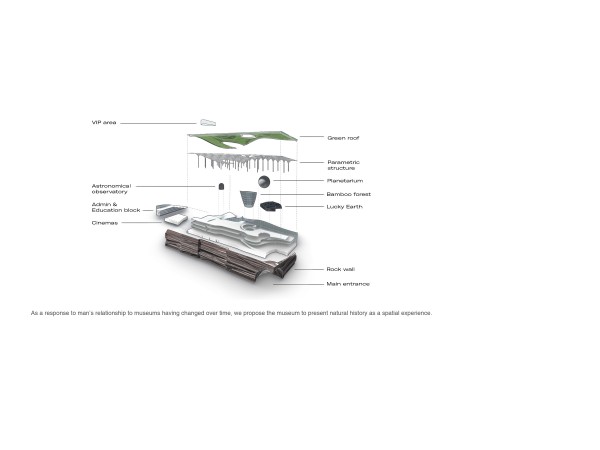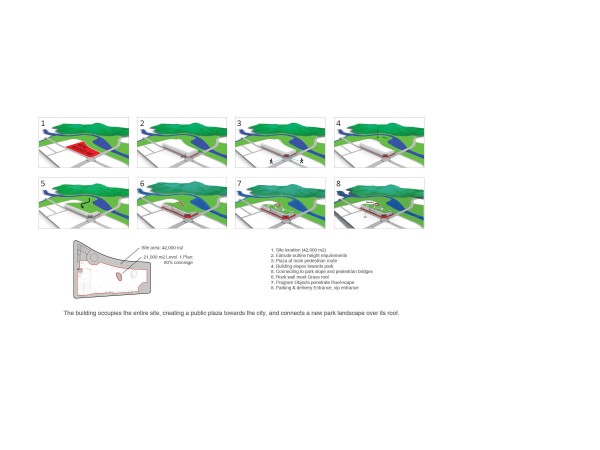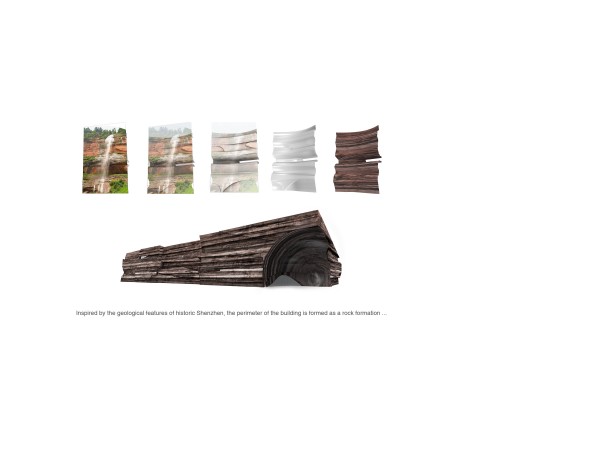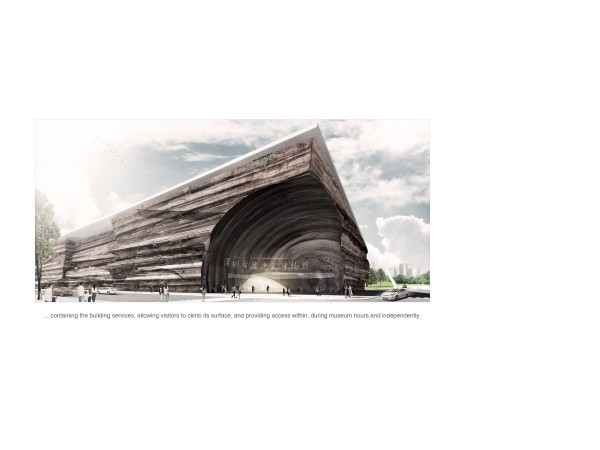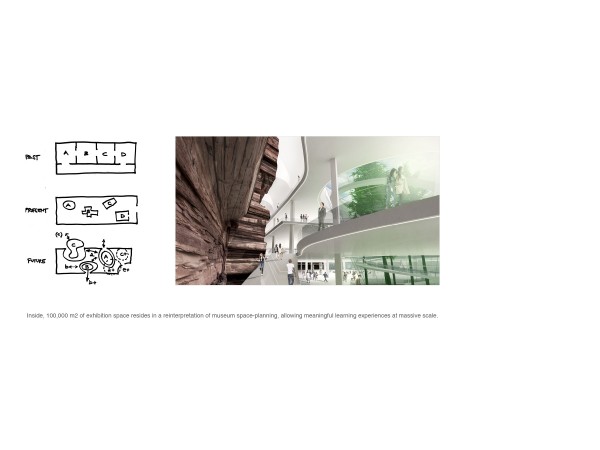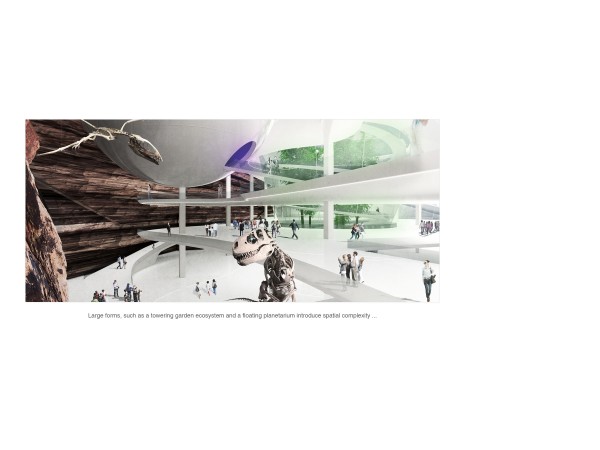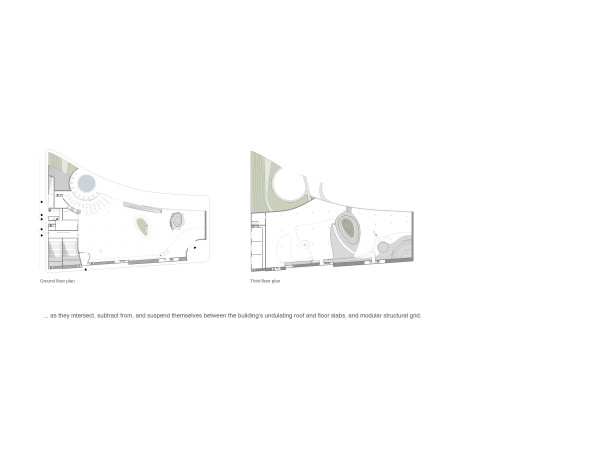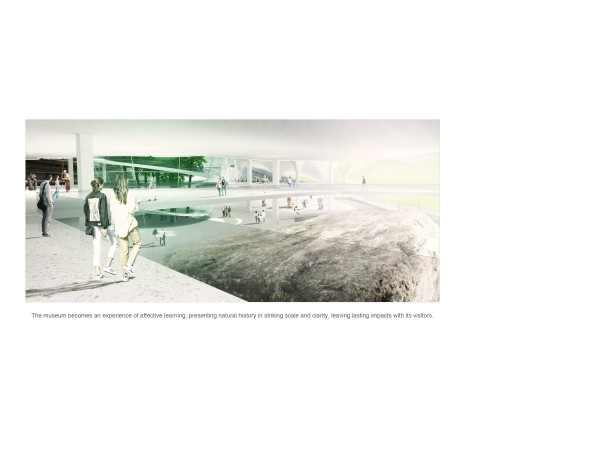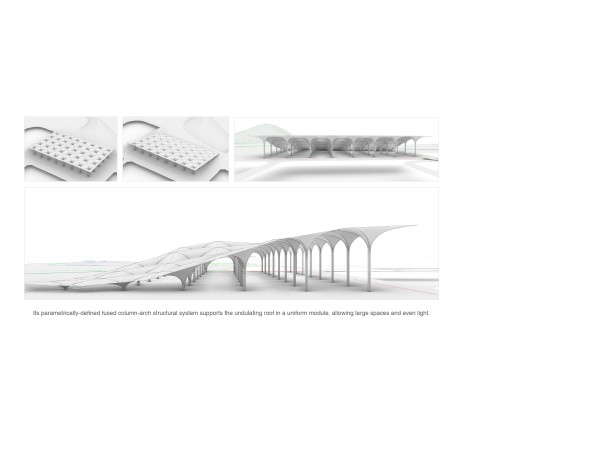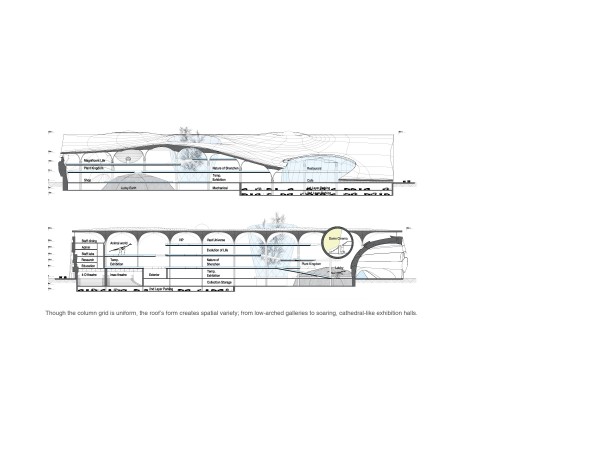MUSEUM IN THE CITY
The understanding of our relationship to the natural world has changed dramatically since natural history museums came into widespread being in the 19th century. The natural sciences have grown from cataloging the natural world, to understanding its underlying processes, to predicting its trajectory. This gains huge significance in an age where human beings are the dominant geological force acting on the planet, the Anthropocene.
MUSEUM AS AFFECTIVE KNOWLEDGE
As museum visitors, emotion directs and filters our attention, helping us process and memorize our perceptive input. Our museum therefore communicates natural history as a spatial experience: rather than explaining the geological formations of Shenzhen, visitors can climb an actual rock wall that forms the main façade of the building, explore an towering bamboo garden ecosystem, or go for a stroll on the 2.5 hectare topological roofscape.
FORM-FINDING
Below this 42,000 m2 elevated landscape, a wide-span concrete shell supports the building’s continuous undulating roof. Its 25m modules with their fused column-arch structures are highly efficient and allow large, uninterrupted spaces with even ambient lighting. While this structural grid is simple and uniform, the undulating ceiling heights and subtractive voids create spatial variety and complexity.
A soaring rock formation forms the South, East and West perimeter walls of the building, as the roofscape touches the ground toward the river and park landscape to the North. Evocative, strange, and monumental, this wall contains all building services, such as public elevators, egress stairs, bathrooms, and infrastructure, allowing for access to all areas during museum hours and independently during nighttime operation. These exterior faces will be open for rock climbing, creating instant social media prominence for the museum. The distinctive material not only lends the building iconic character, it also allows for daylight control and thermal buffering, greatly improving the sustainable performance of the building.
Inside, massive solids and voids subtract from, intersect, and suspend themselves between the roofscape, its structure, and the floor slabs. The Learning and Research Wing forms the backbone of the building to the West, centering the museum’s research and education focus within the rock formation. Restaurants and retail spaces insert themselves at strategic intersections, with the VIP bar and restaurant maintaining a spectacular lookout over the museum and the surrounding landscape.
Ecospheres such as the Bamboo Forest sink directly through the roof to ground level in a glass conical void, filtering luscious green light into its exhibition. Exhibitions reside in a semi-submerged rock cavities, project through the roof surface, climb the 20+ meter high walls, and more, fostering spatial complexity and separation, while maintaining a natural flow and connectivity via various ramps, stairs, and elevator routes.
PHASE 2&3
The second phase of the museum is intended as an extension of the initial concept, but rather than simply extending the building volume, the structure is here conceived as freestanding pavilions in a park, with the “voids” of the main building emerging as solid forms. This juxtaposition reinforces the spatial idea of the museum and allows for new programs not included in the original building, such as exhibitions dedicated to water and air.

